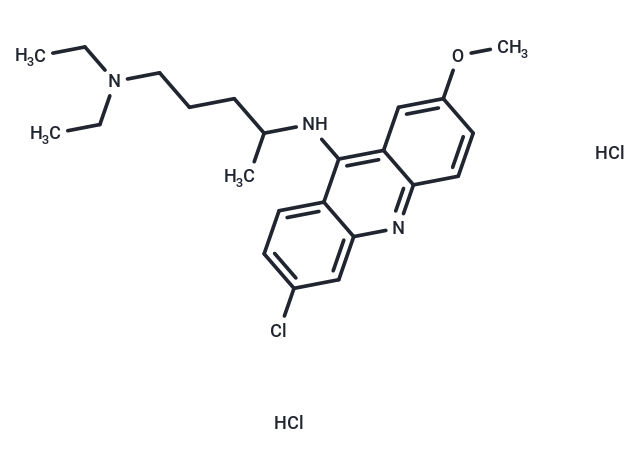Shopping Cart
- Remove All
 Your shopping cart is currently empty
Your shopping cart is currently empty


| Pack Size | Price | Availability | Quantity |
|---|---|---|---|
| 100 mg | $41 | In Stock | |
| 500 mg | $81 | In Stock |
| Description | Quinacrine dihydrochloride (Mepacrine dihydrochloride) is the dihydrochloride salt of the 9-aminoacridine derivative quinacrine with potential antineoplastic and antiparasitic activities. |
| Alias | Mepacrine dihydrochloride, SN-390, Quinacrine 2HCl |
| Molecular Weight | 472.88 |
| Formula | C23H30CLN3O·2HCl |
| Cas No. | 69-05-6 |
| Storage | Powder: -20°C for 3 years | In solvent: -80°C for 1 year | Shipping with blue ice. | |||||||||||||||||||||||||||||||||||||||||||||
| Solubility Information | DMSO: 4.73 mg/mL (10 mM), Sonication is recommended. Ethanol: 27 mg/mL (57.1 mM) H2O: 49 mg/mL (103.6 mM) | |||||||||||||||||||||||||||||||||||||||||||||
Solution Preparation Table | ||||||||||||||||||||||||||||||||||||||||||||||
DMSO/Ethanol/H2O
Ethanol/H2O
H2O
| ||||||||||||||||||||||||||||||||||||||||||||||

Copyright © 2015-2024 TargetMol Chemicals Inc. All Rights Reserved.